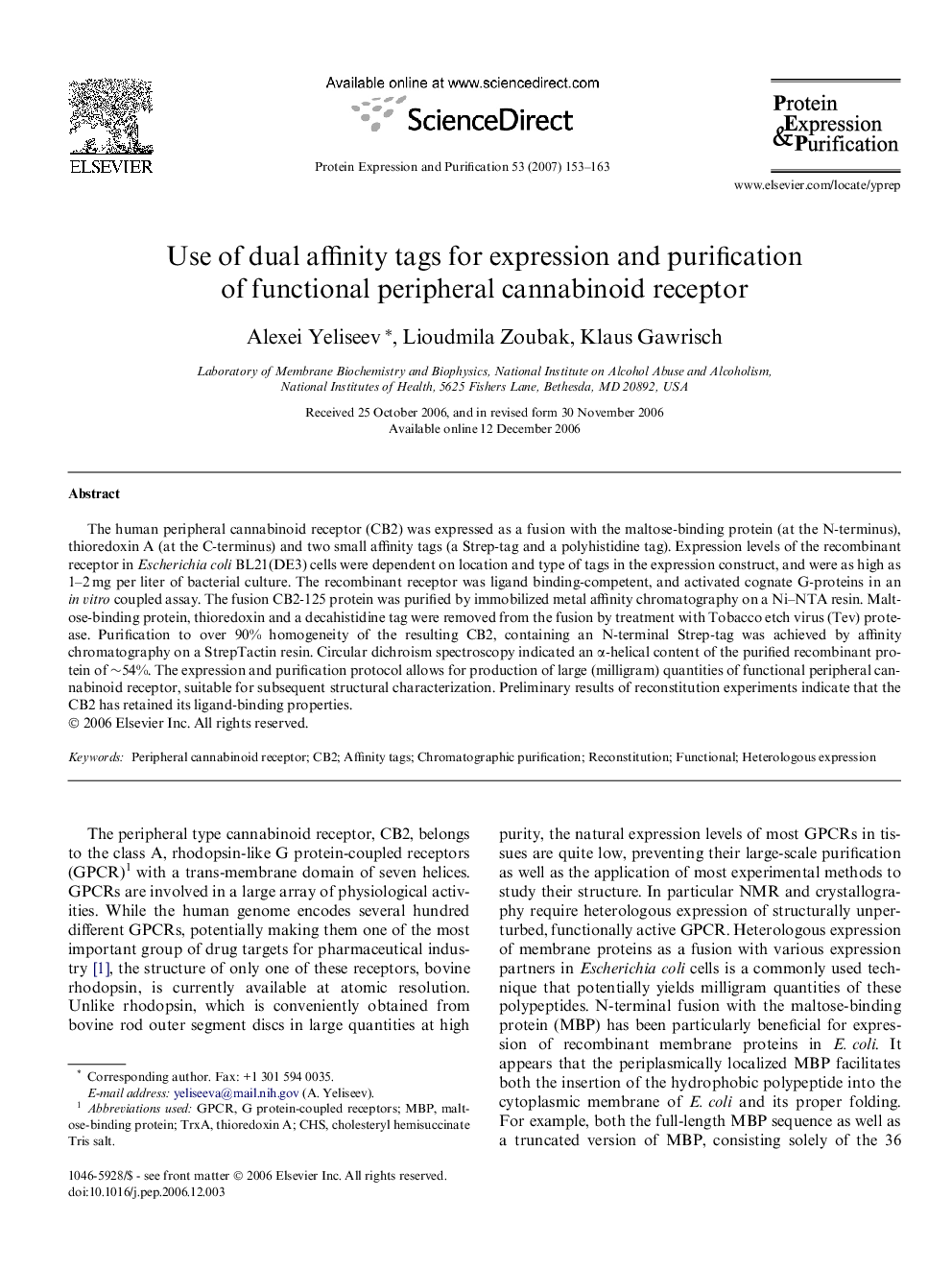| Article ID | Journal | Published Year | Pages | File Type |
|---|---|---|---|---|
| 2022011 | Protein Expression and Purification | 2007 | 11 Pages |
Abstract
The human peripheral cannabinoid receptor (CB2) was expressed as a fusion with the maltose-binding protein (at the N-terminus), thioredoxin A (at the C-terminus) and two small affinity tags (a Strep-tag and a polyhistidine tag). Expression levels of the recombinant receptor in Escherichia coli BL21(DE3) cells were dependent on location and type of tags in the expression construct, and were as high as 1-2 mg per liter of bacterial culture. The recombinant receptor was ligand binding-competent, and activated cognate G-proteins in an in vitro coupled assay. The fusion CB2-125 protein was purified by immobilized metal affinity chromatography on a Ni-NTA resin. Maltose-binding protein, thioredoxin and a decahistidine tag were removed from the fusion by treatment with Tobacco etch virus (Tev) protease. Purification to over 90% homogeneity of the resulting CB2, containing an N-terminal Strep-tag was achieved by affinity chromatography on a StrepTactin resin. Circular dichroism spectroscopy indicated an α-helical content of the purified recombinant protein of â¼54%. The expression and purification protocol allows for production of large (milligram) quantities of functional peripheral cannabinoid receptor, suitable for subsequent structural characterization. Preliminary results of reconstitution experiments indicate that the CB2 has retained its ligand-binding properties.
Keywords
Related Topics
Life Sciences
Biochemistry, Genetics and Molecular Biology
Biochemistry
Authors
Alexei Yeliseev, Lioudmila Zoubak, Klaus Gawrisch,
